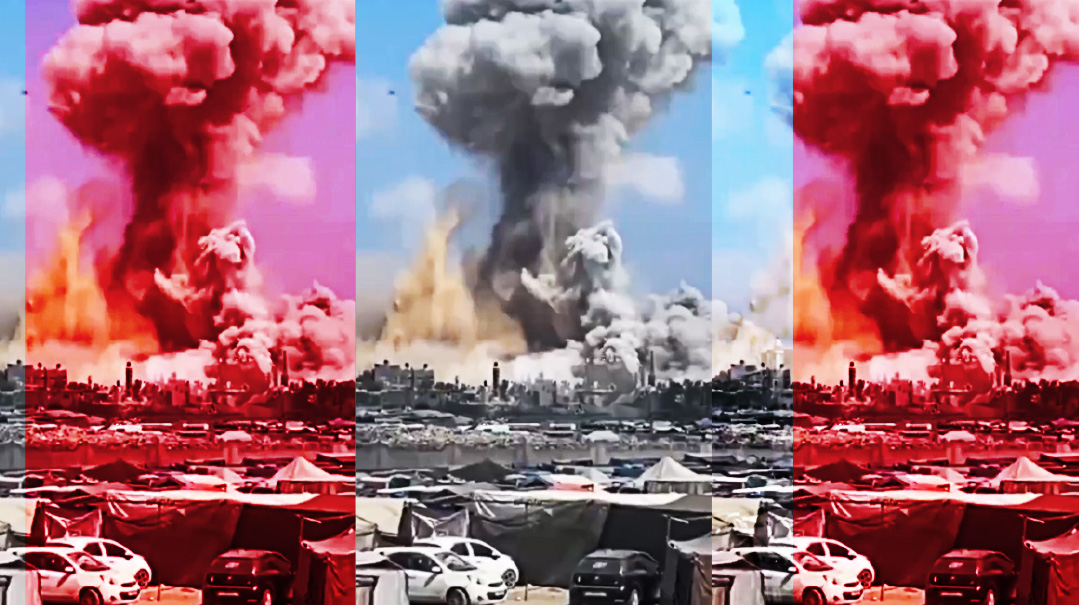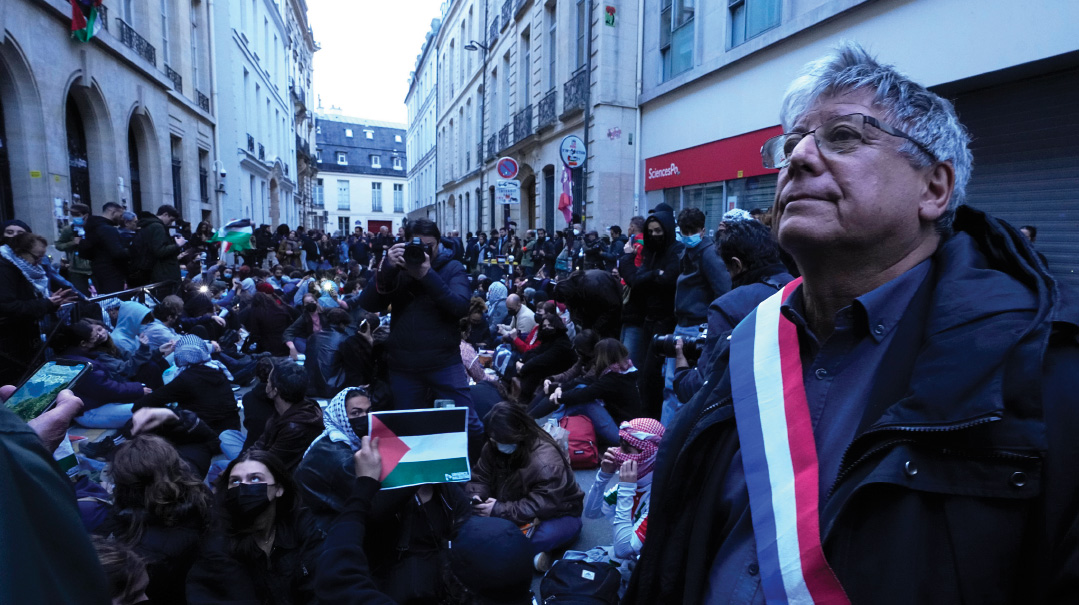A Lingering Wound

The pain of the Gaza expulsion still lingers

Fifteen years after 8,000 Jews were expelled from Gush Katif, evacuees are unsettled, Hamas uses the territory as a missile launching pad, and Israel bears a national wound.
Fifteen years ago, on August 15, 2005 (the 10th of Av), the residents of Gush Katif were uprooted and expelled from their homes. Twenty-one settlements were vacated under the order of then-prime minister Ariel Sharon. Even today, a decade and a half later, it is not clear why Sharon ordered the expulsion, seemingly eschewing the values he had held dear for years as a public figure.
A storied general who had supported the settlement enterprise, Sharon has gone down in history as the man who tore the nation apart while contributing nothing to the state’s security. Even the Oslo Accords, signed by Labor leaders Shimon Peres and Yitzchak Rabin, did not bring about the eviction of one Jew from his home.
Those responsible for drafting the plan cannot deny two facts. The first, that the IDF withdrawal from Gaza led to Hamas control of Gaza and a never-ending barrage of rocket fire on Israeli cities. Worse still is the pledge that Sharon made at the time: to re-capture the Strip if even one missile from Gaza landed on Israeli soil. Since that time, there have been three major Israeli military operations in Gaza, the capture and hostage taking of Gilad Shalit, and the transformation of the enclave from an impoverished territory to a veritable military bunker from which Hamas builds tunnels to invade Israel.
Oh, and there’s another fact: At the time, Ariel Sharon traveled to Washington to canvass the support of President George W. Bush. Upon his return, he brought with him a letter, which his aides called “historic.” The letter stated that the administration favored resettling Palestinian refugees “in a Palestinian state” and not in Israel, and reassured Jerusalem that the 1949 armistice lines would not constitute the final borders in any future peace deal. Using this letter, Sharon attempted to sell the disengagement with both the government and the public. Some of the ministers at the time were convinced. With the test of time, it turned out that the opponents to disengagement were right: the Obama administration disregarded the Bush-Sharon letters and pursued its own policy in the Middle East.
A Storm
Gideon Saar, who served as interior minister from 2009 to 2014 and is a current member of Knesset, remembers those days well. As the secretary of the first Sharon cabinet and coalition chairman of the second government, he was considered to be one of the people closest to Sharon. Until the Disengagement. Even before the plan was publicized, Sharon tried to persuade Saar to support it. They had six conversations, and they all concluded the same way they had started. Saar refused.
In an interview last week, I asked Saar whether his objection was sweeping, or, if like other ministers, he thought there was some merit to the plan. “My objection was absolute!” he replied. “From the first second, I did not understand the rationale for it. It was, in my mind, a shameful capitulation to terror.
“When Sharon first presented the plan,” Saar continues, “the withdrawal area was smaller than what was ultimately presented to the cabinet and the Knesset. The uprooting of the four towns in the northern Shomron was an American proposal, and to the best of my recollection — although I am not sure — the three towns in the northern Gaza Strip were not included in the original plan.”
Noting Saar’s objections, Sharon knew that his former ally would not help him advance the plan in the government. “In our conversations he tried to persuade me. The truth is that from the moment it began to roll, in the government and in the Knesset, I ceased functioning as the coalition chairman. The one who filled my place was Ronny Baron, who was then the chairman of the Knesset Committee.”
Saar resigned from his position twice. “If there would have been a law that would have made it possible for me to force Gideon Saar to withdraw his resignation, I would have exercised it,” Sharon said at the time. Other ministers pressured him to withdraw his resignation. But again, Saar refused.
After the plan passed in the Knesset, the relationship between Saar and Sharon was never the same. “There was mutual respect between us,” he recalls. “I respected him, but the ideological chasms that separated us brought about a distance.”
Saar rejected the plan because it entailed a unilateral withdrawal — and Israel got nothing in return. “When Prime Minister Sharon returned from Washington with the letter from President Bush, he tried to pressure me to change my stance. I was not persuaded that this particular accomplishment was worth the price of expelling thousands of Jews from their homes.”
There has long been speculation — never proven — that state prosecutors pressured Sharon into the disengagement after threatening him with prosecution for various crimes. For his part, Saar says that he has “no way to refute or confirm those claims.”
Three months after the Disengagement, Sharon broke off from the Likud and established the Kadima party. Despite the tension between them, Sharon tried to persuade Saar to join him but Saar would have none of it. “I thought it was time to move on,” Saar says.
Despite the objections of Saar and other ministers, the disengagement turned into a political victory for Sharon. Most Likud ministers supported the plan, including Binyamin Netanyahu. Today, 15 years later, most are ashamed of their actions.
The Struggle for Normalcy
The Gaza evacuees were settled temporarily and promised that new communities would be built for them. While the government has fulfilled that promise to some of the evacuees, many are still living in temporary quarters.
To get a sense of the lasting effects of the disengagement, I visited the town of Nitzan, a tiny community south of Ashdod, where 500 expellee families live. I wanted to understand what they have gone through in recent years, and how the trauma of the Disengagement may have scarred them.
At the entrance to Nitzan, in a plaza near the Katif Center, I meet Yehuda Gross. He’s been evicted from his home twice — both as part of peace deals that were signed by right-wing governments. The first expulsion took place in 1982, when 2,500 Israelis were evacuated from the Sinai settlement of Yamit, part of the Camp David agreements signed by former prime minister Menachem Begin. The second time was during the Gaza Disengagement. “The Israeli government brought us from Yamit to caravans in Atzmona [in Gush Katif],” he tells me. “We lived there for two years, and when Neve Dekalim was established, we moved there.”
He takes me to the hardware store he opened, which he says was thriving until the coronavirus outbreak. “When we got here, to Nitzan, I wanted to continue earning a living the same way I had before. The Israeli government pledged that anyone who had a store or business in the Gush would get an equal-sized lot in the new town.”
A government representative told him personally that he would get a store. “We waited and waited and nothing happened. I took the initiative and found out from [a local committee handling the affairs of evacuees] that there was available space on which I could build. They told me it was available so I built there. I stopped waiting for the government; I realized that no salvation was coming from them.”
But instead of the government officially allocating the lot and meeting its commitments, Yehuda, like many others, found himself in court, fighting lawsuits claiming illegal construction. To this day, there has been no resolution. “I believe that now, with Yaakov Litzman in the Housing Ministry, he will find us a solution. He’s a man of action and I’m convinced he will help us rectify this wrong.”
The wound of Disengagement is even deeper because of what has happened to the former Israeli settlements, Gross says. “They promised us that we’d see Singapore and Hong Kong on the ruins, and instead, there are terror bases. They used our irrigation pipes to create rockets and to fire them at Israel’s towns.”
Back to Square One
One hundred meters away is the Katif Center, a memorial for Gush Katif and its communities. Muchi Betar, the director of the center, is waiting for me there. Before the expulsion, he directed the education department in the Gush Katif Regional Council. “Over the years,” he says, “I collected materials that documented life in Gush Katif,” he says.
“Our commitment is to convey to the next generation what 35 years of settlement was. If we don’t do it, our grandchildren and great grandchildren will not know our history. If we don’t collect all this material, no one will have the strength in coming years to collect it and no one will remember the tremendous settlement enterprise of Gush Katif.”
At the entrance to the structure there is a little niche in which Betar chose to display a piece of metal. “It is one of the first mortar shells fired at Gush Katif,” he says. “It’s sad that the mortars turned into missiles that chase us all the way here.”
Betar and his family lived in Kevutzat Yavneh for a year after the expulsion, then moved to caravans in Nitzan. When the town expanded nine years ago, they moved into a permanent home. Despite the years, he says, some of the evacuees have never recovered from the trauma, both emotionally and economically.
“I know people who experienced serious emotional issues,” he says. “People needed to exhume bodies of family members and move their burial sites to within the Green Line. It meant having another shivah — and there were dozens of families who had to do this. It was very difficult.”
Economically, settlers who were engaged in agriculture had an especially tough time. “They were offered jobs as wage earners, but after working for 25 years and supporting their families, it’s not easy at age 60 to start from scratch and become wage earners who bring home five to six thousand shekels a month. It broke them financially and emotionally. They lost their peace of mind.”
Nitzan is just 30 kilometers from the Gaza border and is often the target of rocket fire from Hamas. It is an irony, even a tragedy, that the people evacuated from Gaza to achieve ostensible peace must now hide in shelters with every rocket barrage.
“When we see what is going on in Gaza, especially the military campaigns that ended in a draw, we always say: ‘We told you so,’ ” Betar says. “We told the leaders before the expulsion that we know that if we leave, there will be no protective shield for the residents of Israel. We warned them that the range of rockets will only grow. We were the bulletproof vest. We warned that the missiles would get to Ahskelon, Be’er Sheva, and Tel Aviv. Regretfully, after a year, everyone saw that we were right. That is what actually happened, and Sharon, who promised that the first missile would lead to Gaza being crushed, did not keep his promise.”
Lessons and Reckoning
Today, even those who supported the withdrawal believe that many serious mistakes were made in its implementation. For one, the withdrawal from the Gaza allowed Hamas to smuggle in weapons and rearm itself. Diplomatically, critics say, Israel should have handed control of the towns that were evacuated to the Palestinian Authority, and to advertise this gesture of goodwill on the international stage. Instead, the government decided to leave unilaterally and ultimately Hamas came to power and claimed a victory over Israel.
Former ministers also say Israel should have involved the White House from the start of the process. Instead, they were only involved at a late stage, when the Bush administration understood that Israel would withdraw regardless. That is why, these former ministers say, the Americans refused to give Israel anything in exchange for withdrawing from Gaza and did not supply the Jewish state with the resources that were needed to implement the plan.
Moreover, these ministers add, with regard to establishing borders and the fate of the settlement enterprise, a precedent was set: a unilateral withdrawal of one hundred percent, and a retreat to the 1967 lines. In an interview with a senior defense official, he told me that it would have been better to leave a settlement bloc in the northern Gaza Strip, even as a bargaining chip for any future negotiations. “Leaving a bloc in the northern part of the Strip and not evacuating the entire Jewish population could have served as an anchor for similar moves in the future,” he says. “It would have given us security advantages and would have reduced the pain of the evacuation, and the costs.”
It is obvious that the state of Israel also botched the resettlement of the evacuees. The government failed to establish any effective safety net. What’s more, an opportunity to resettle the Negev and Galilee with a national plan was missed.
In 2009, an investigative commission led by retired Justice Eliyahu Matza found that the State failed in its treatment of the evacuees. The commission also found that the government failed to make the matter a top national priority. “There was a significant gap,” the commission noted, “between the rhetoric of all the government leaders and the actual actions that the State took.”
Regarding any future resettlement, the Commission made clear that Israel must prepare a suitable plan — housing, jobs, counseling — for any Israeli evacuated from their homes. The commission also recommended that a new a multidisciplinary entity must be formed to deal with all the various matters that might arise.
Let’s hope there is no reason for the committee’s recommendations in the future.
(Originally featured in Mishpacha, Issue 822)
Oops! We could not locate your form.













